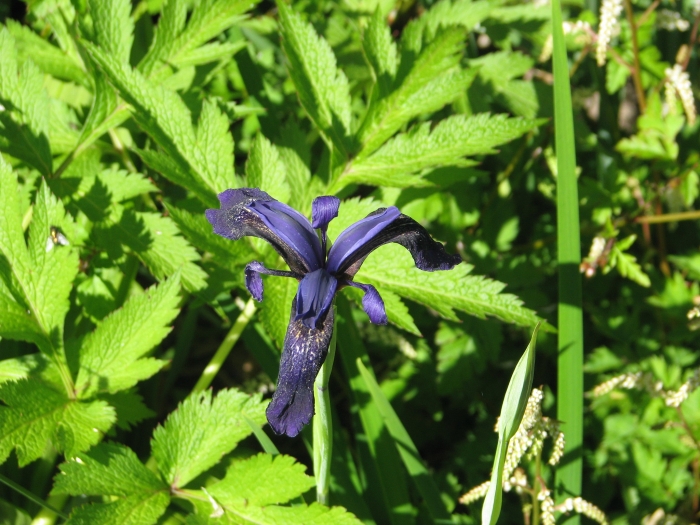Angular-Fruit Iris
(Iris goniocarpa)
Angular-Fruit Iris (Iris goniocarpa)
/
/

peganum
CC BY-SA 2.0
Image By:
peganum
Recorded By:
Copyright:
CC BY-SA 2.0
Copyright Notice:
Photo by: peganum | License Type: CC BY-SA 2.0 | License URL: https://creativecommons.org/licenses/by-sa/2.0/ | Uploader: peganum | Publisher: Flickr |



Estimated Native Range
Summary
Iris goniocarpa, commonly known as Angular-Fruit Iris, is an evergreen perennial herb, native to the mountainous regions of China and the Himalayas. It thrives in alpine meadows and on rocky slopes, where it is adapted to the cool, moist conditions. This species typically features long, yellow-green to dark green leaves and slender stems that support a single terminal flower. The flowers, blooming in spring or early summer, exhibit a range of hues including blue, lavender-blue, lilac, blue-violet, or blue-purple, and are particularly noted for their ornamental value. Following the flowering period, from June to August, it produces an ellipsoid seed capsule.
The Angular-Fruit Iris is valued for its striking flowers and ability to adapt to various soil pH levels. It is often used in rock gardens, alpine collections, and as a border plant in temperate regions. While it requires moisture in the spring, it benefits from a dry summer dormancy period. For successful cultivation, it should be planted in September or October for blooms the following year. Although not hardy in the UK and requiring protection from winter wetness, it can be grown in an alpine house or bulb frame. In Europe, it is hardy but needs shelter from excessive winter moisture. It thrives in full sun and well-drained soils with medium to fast drainage.CC BY-SA 4.0
The Angular-Fruit Iris is valued for its striking flowers and ability to adapt to various soil pH levels. It is often used in rock gardens, alpine collections, and as a border plant in temperate regions. While it requires moisture in the spring, it benefits from a dry summer dormancy period. For successful cultivation, it should be planted in September or October for blooms the following year. Although not hardy in the UK and requiring protection from winter wetness, it can be grown in an alpine house or bulb frame. In Europe, it is hardy but needs shelter from excessive winter moisture. It thrives in full sun and well-drained soils with medium to fast drainage.CC BY-SA 4.0
Plant Description
- Plant Type: Bulb
- Height: 0.5-0.8 feet
- Width: 0.4-0.5 feet
- Growth Rate: Moderate
- Flower Color: Purple, Blue
- Flowering Season: Spring, Summer
- Leaf Retention: Evergreen
Growth Requirements
- Sun: Full Sun
- Water: Medium
- Drainage: Medium, Fast
Common Uses
Bee Garden, Bird Garden, Butterfly Garden, Deer Resistant, Hummingbird Garden, Low Maintenance, Rabbit Resistant, Showy Flowers
Natural Habitat
Native to mountainous regions of China and the Himalayas, thriving in alpine meadows and on rocky slopes
Other Names
Common Names: Rui Guo Yuan Wei
Scientific Names: , Iris goniocarpa, Iris goniocarpa var. tenella, Iris felina, Iris pardalino,
GBIF Accepted Name: Iris goniocarpa Baker